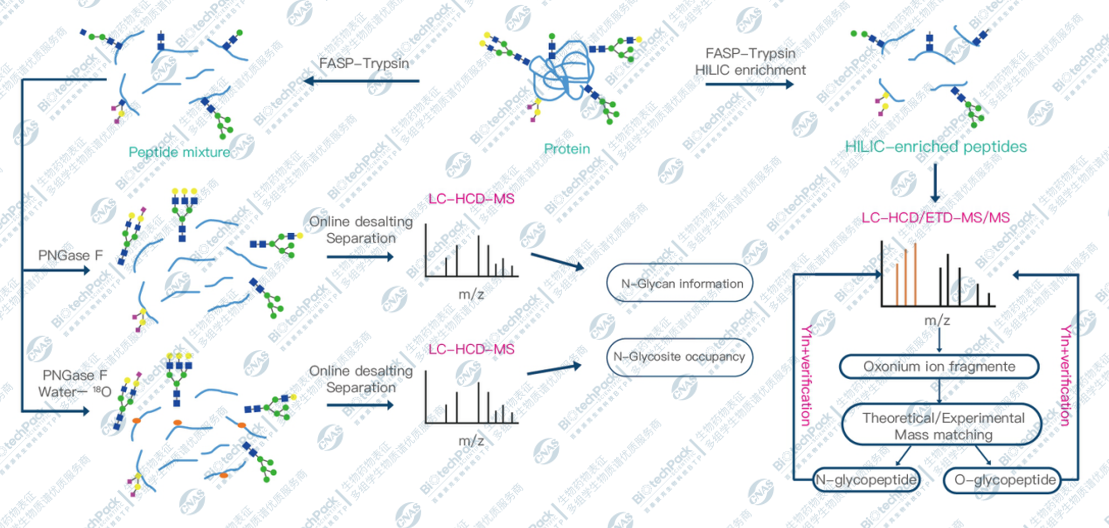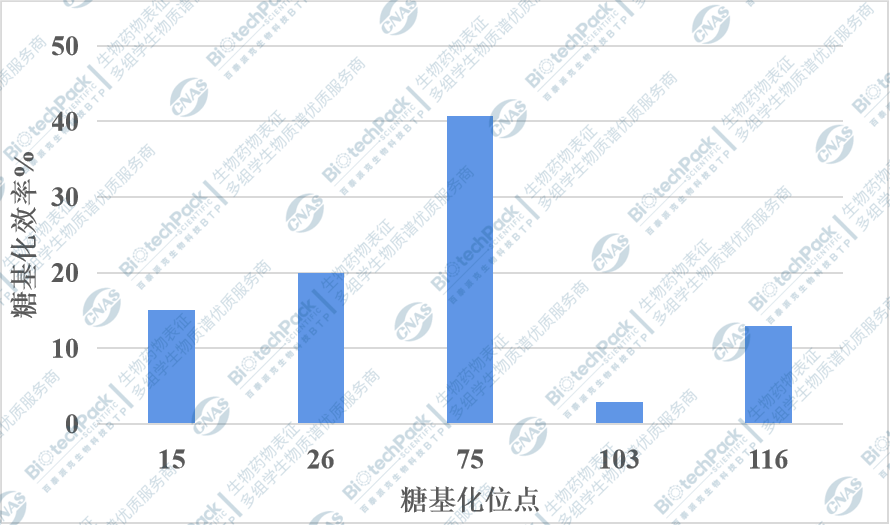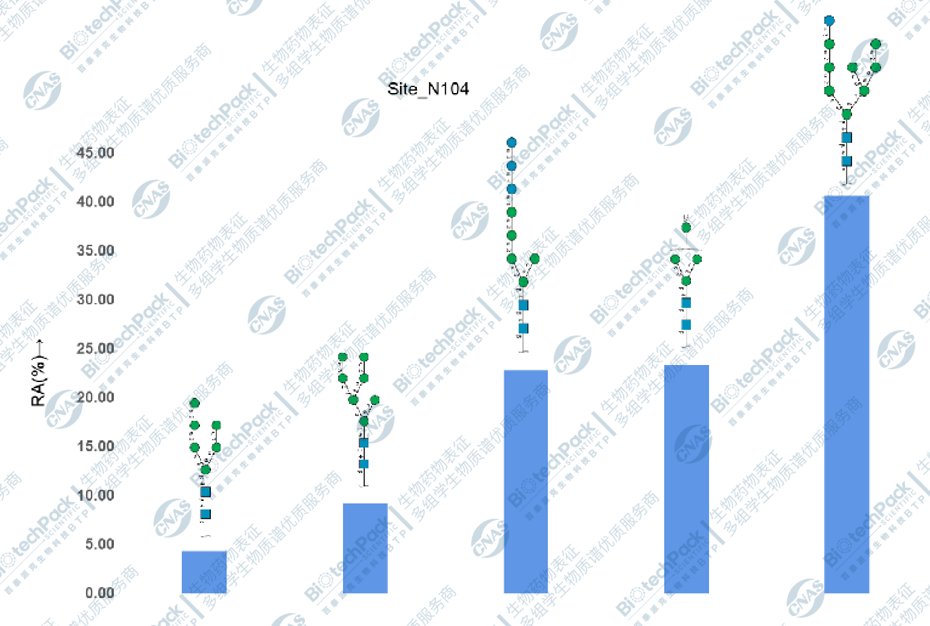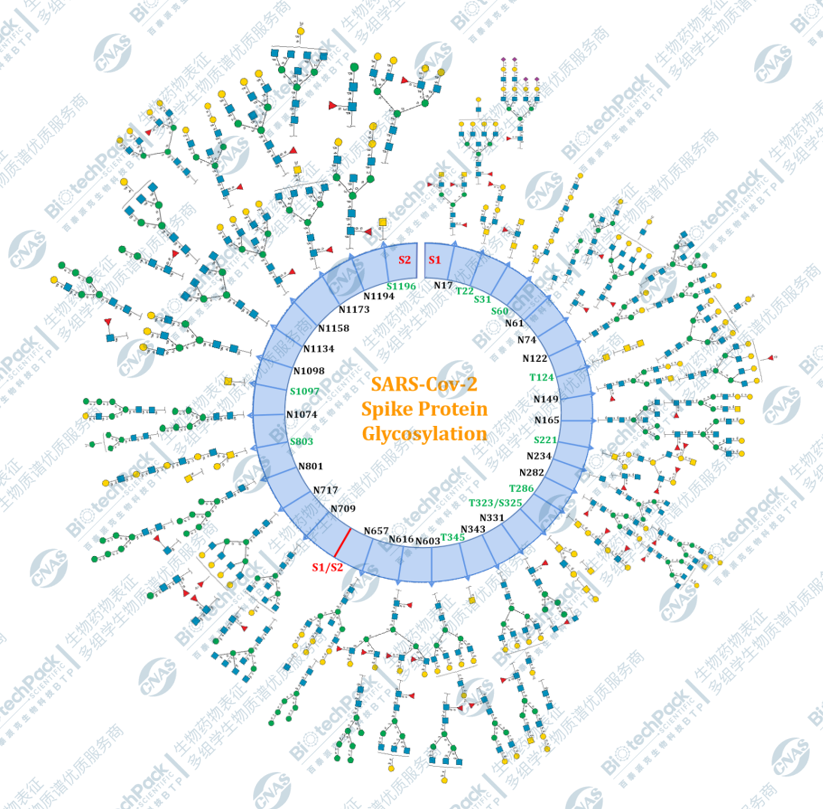Complete Glycosylation Analysis
Protein glycosylation refers to the process by which carbohydrate compounds are linked to amino acid residues on proteins through glycosidic bonds under the action of glycosyltransferases. This process begins in the endoplasmic reticulum, undergoes a series of modifications, and is ultimately completed in the Golgi apparatus. Proteins modified by glycosylation are known as glycoproteins.
Glycosylation has significant effects on the efficacy, stability, and immunogenicity of biopharmaceuticals. Oligosaccharide profiles and glycan structures are important indicators for evaluating the characteristics of biopharmaceuticals. Oligosaccharides are involved in protein folding, signal transduction, and other cellular processes, forming glycoproteins with proteins. Glycoproteins are often located on the cell surface and participate in the recognition of bacteria and viruses and the interaction with lectins and other proteins, which are critical for the normal function of biopharmaceuticals.
The non-template synthesis and dendritic structure of oligosaccharides make structural analysis challenging. To address this issue, BTP (BioTech Pioneer) has developed a series of stable and efficient high-resolution liquid chromatography-mass spectrometry (LC-MS/MS) characterization methods. These methods cover the entire analytical process from glycan analysis to glycosylation site identification and glycopeptide analysis, enabling accurate structural analysis of oligosaccharides and providing powerful tools and technical support for glycosylation research. Below is the basic flowchart:

Figure 1Glycosylation Analysis Flowchart
Comprehensive Glycosylation Analysis of Biopharmaceuticals
Glycosylated peptides refer to the form in which glycans are linked to peptide segments, containing amino acid information of the peptide segment, complete glycan information, and the binding site information of the glycan and the peptide segment. To achieve comprehensive analysis of glycosylation in specific glycoproteins, BTP has developed corresponding analytical methods based on a high-resolution mass spectrometry platform combining liquid chromatography and mass spectrometry. Through these methods, we can obtain the following information:
• Localization of glycosylation sites, i.e., which sites in the protein undergo glycosylation modification;
• Distinguishing N-glycosylation sites from O-glycosylation sites to determine the type of glycan modification;
• Obtaining information on the composition, structure, and relative abundance of glycans corresponding to each N-glycosylation site;
• Obtaining information on the composition and relative abundance of glycans corresponding to each O-glycosylation site;
• Statistical and summary analysis of the above information to facilitate further analysis and interpretation of glycoprotein glycosylation characteristics.
These analytical results will help us gain a deeper understanding of the glycosylation modifications of glycoproteins, providing important information for studying the function and biological significance of glycoproteins.
Experimental Instruments
• NanoLC: Vanquish NEO
• MS: Orbitrap Fusion Lumos With ETD
Experimental Results Display
1.Types of Glycosylation Modifications

Table 1 Statistics of Glycosylation Modification Types
Note: Type: Type of glycosylation modification; Position: Position of the glycosylation site in the protein; Glycans NHFAGNa: Type of glycosylation modification; Modification Type(s): Molecular weight of the glycan type; Score: Protein score; Intensity: Relative abundance of the protein; Percentage %: Proportion of this glycan type in the total glycan types at their respective sites.
2.Efficiency of Glycosylation Site Modifications

Figure 2 Glycosylation Efficiency Statistics
Note: Glycosylation Efficiency (%) = * 100
3.Proportion of Various Glycan Types at Each Glycosylation Site

Figure 3 Proportion of Glycan Types
Note: The figure shows the N-glycan types and proportions at a specific site, with the x-axis representing glycan types and the y-axis representing the proportion of glycan types.
4.Summary of Protein Glycosylation Modification Information

Figure 4 Summary of Glycosylation Information
Note: The figure shows the top three glycans in terms of abundance at each site.
Related Services
Detection of Glycosylation Sites in Biopharmaceuticals
Glycan Profile Detection in Biopharmaceuticals
Analysis of Glycosylated Peptides
How to order?





